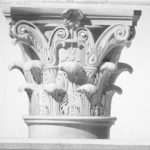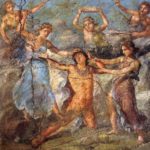ἔπη δὲ ἔστιν ἐν Ἕλλησι Ναυπάκτια ὀνομαζόμενα:πεποίηται δὲ ἐν αὐτοῖς Ἰάσονα ἐξ Ἰωλκοῦ μετὰ τὸν Πελίου θάνατον ἐς Κόρκυραν μετοικῆσαι καί οἱ Μέρμερον μὲν τὸν πρεσβύτερον τῶν παίδων ὑπὸ λεαίνης διαφθαρῆναιθηρεύοντα ἐν τῇ πέραν, adv., on the other side, across, opposite”>πέραν ἠπείρῳ: Φέρητι δὲ οὐδέν ἐστιν ἐς μνήμηνπροσκείμενον. Κιναίθων δὲ ὁ Λακεδαιμόνιος—ἐγενεαλόγησε γὰρ καὶ οὗτος ἔπεσι —Μήδειον καὶ θυγατέρα Ἐριῶπιν Ἰάσονι εἶπεν ἐκ Μηδείας γενέσθαι: πέρα δὲ ἐς τοὺς παῖδας οὐδὲ τούτῳ πεποιημένα ἐστίν.
Pausanias. Pausaniae Graeciae Descriptio, 3 vols. Leipzig, Teubner. 1903.
The Annenberg CPB/Project provided support for entering this text.
I am text block. Click edit button to change this text. Lorem ipsum dolor sit amet, consectetur adipiscing elit. Ut elit tellus, luctus nec ullamcorper mattis, pulvinar dapibus leo.
I am text block. Click edit button to change this text. Lorem ipsum dolor sit amet, consectetur adipiscing elit. Ut elit tellus, luctus nec ullamcorper mattis, pulvinar dapibus leo.
I am text block. Click edit button to change this text. Lorem ipsum dolor sit amet, consectetur adipiscing elit. Ut elit tellus, luctus nec ullamcorper mattis, pulvinar dapibus leo.







